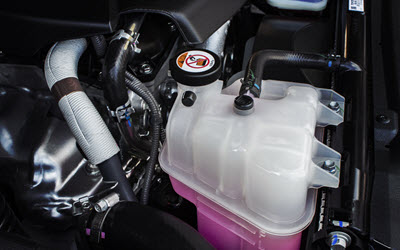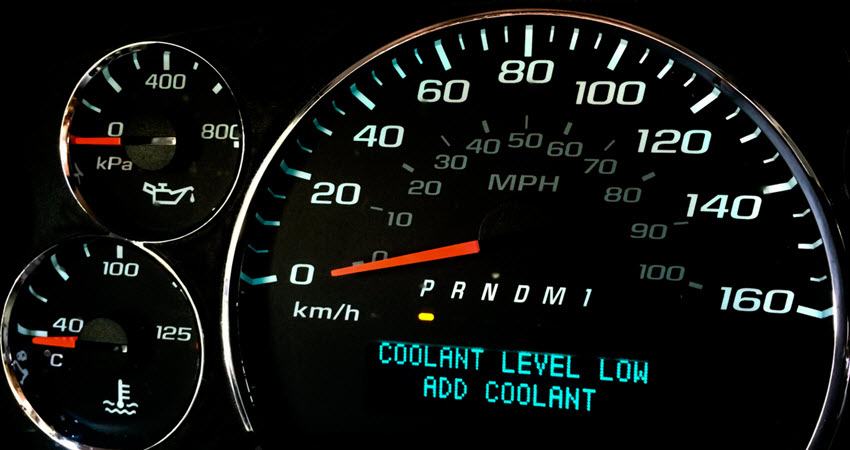Have you ever detected a faint scent of coolant or noticed a mysterious puddle beneath your parked Jaguar? Those might be subtle hints of impending trouble.
The coolant reservoir, also known as the overflow tank or expansion tank, serves as a vital part of the cooling system. Its primary function is to provide a space for coolant to expand and contract as the engine temperature fluctuates. This prevents air pockets in the cooling system, ensuring efficient heat dissipation and maintaining a stable engine temperature.
Here are some common factors leading to coolant reservoir failure.
Material Degradation
Over time, the materials used in the construction of the coolant reservoir can degrade due to exposure to heat, pressure, and the chemical composition of the coolant itself. The continuous cycle of heating and cooling can weaken the reservoir’s structure, leading to cracks, leaks, or even complete failure.
Coolant Contamination
Coolants usually contain additives that help prevent corrosion and lubricate the various components of the cooling system. However, if the coolant becomes contaminated with foreign substances, it can accelerate wear on the reservoir. Contaminants like rust, debris, or incompatible coolant types can compromise the reservoir’s integrity and contribute to failure.
Excessive Pressure
The cooling system operates under a specific pressure to raise the boiling point of the coolant. If there’s a malfunction, such as a failing radiator cap or a blocked hose, it can lead to increased pressure within the system. This excessive pressure can strain the coolant reservoir, causing it to crack or rupture.
Inadequate Maintenance
Neglecting routine maintenance, including coolant flushes and system checks, can accelerate wear and tear on the coolant reservoir. Old or contaminated coolant can contribute to corrosion, and a lack of proper maintenance may allow issues to go unnoticed until they result in reservoir failure.
How To Spot Coolant Reservoir Issues
- Coolant Leaks: Keep an eye out for any puddles or stains underneath your parked Jaguar. These spots can be a telltale sign of a coolant leak, and often, the source might be a damaged reservoir. Leaks might not always be substantial, so even a small accumulation of coolant beneath the car warrants attention.
- Low Coolant Levels: A sudden drop in the coolant levels, even without visible leaks, might indicate a problem with the reservoir. It’s important to regularly check the coolant levels in the reservoir, as a decline could imply a slow leak or an issue with the reservoir’s sealing integrity.
- Visible Damage: Inspect the coolant reservoir visually for any signs of wear or damage. Cracks, bulges, or discoloration on the reservoir could be indications of impending failure. Over time, the reservoir might deteriorate due to heat exposure or material fatigue, leading to visible signs that suggest potential issues.
Preventive Measures for Coolant Reservoir Health
Scheduled Maintenance
Adhering to Jaguar’s recommended maintenance schedule is crucial. This includes routine checks of the entire cooling system, which encompasses examining the coolant reservoir. Regular maintenance ensures that any potential problems are identified and addressed promptly.
Coolant Quality
Always use high-quality coolant recommended by Jaguar. Opting for the right coolant type and adhering to manufacturer specifications ensures the longevity of the reservoir and the overall efficiency of the cooling system. Using improper coolant can lead to corrosion, seal damage, or other issues that could affect the reservoir’s integrity.
Pressure Checks
Periodically test the cooling system to ensure it maintains the proper pressure levels recommended by Jaguar. Maintaining the correct pressure prevents undue stress on the coolant reservoir and the entire cooling system, minimizing the risk of leaks or ruptures.
Call A Professional
If you notice any signs of coolant reservoir issues or suspect a problem, seek professional help promptly. Certified Jaguar technicians have the expertise and specialized knowledge to conduct thorough inspections and provide effective solutions.
Visit Our Trusted Garage for Dependable Jaguar Repairs
At Francen and Son Foreign Car, we take pride in being  the foremost auto repair destination for drivers in Algonquin, IL, and its surrounding areas. Our state-of-the-art garage is equipped with cutting-edge tools specifically tailored for Jaguar repair and maintenance. If you’ve noticed a leaked or damaged coolant reservoir in your Jaguar, our team of experts is here to help. With precision and care, we’ll meticulously detect and address any issues, ensuring the optimal performance and longevity of your Jaguar.
the foremost auto repair destination for drivers in Algonquin, IL, and its surrounding areas. Our state-of-the-art garage is equipped with cutting-edge tools specifically tailored for Jaguar repair and maintenance. If you’ve noticed a leaked or damaged coolant reservoir in your Jaguar, our team of experts is here to help. With precision and care, we’ll meticulously detect and address any issues, ensuring the optimal performance and longevity of your Jaguar.
Whether you prefer to visit our shop in person or inquire about our services through our dedicated service line, we’re committed to providing reliable and expert solutions for all your Jaguar repair needs. Schedule an appointment with us now.
 Mon-Fri: 8:00AM – 5:00PM
Mon-Fri: 8:00AM – 5:00PM 1650 E Algonquin Rd. Algonquin, IL 60102
1650 E Algonquin Rd. Algonquin, IL 60102 (847) 658-9500
(847) 658-9500